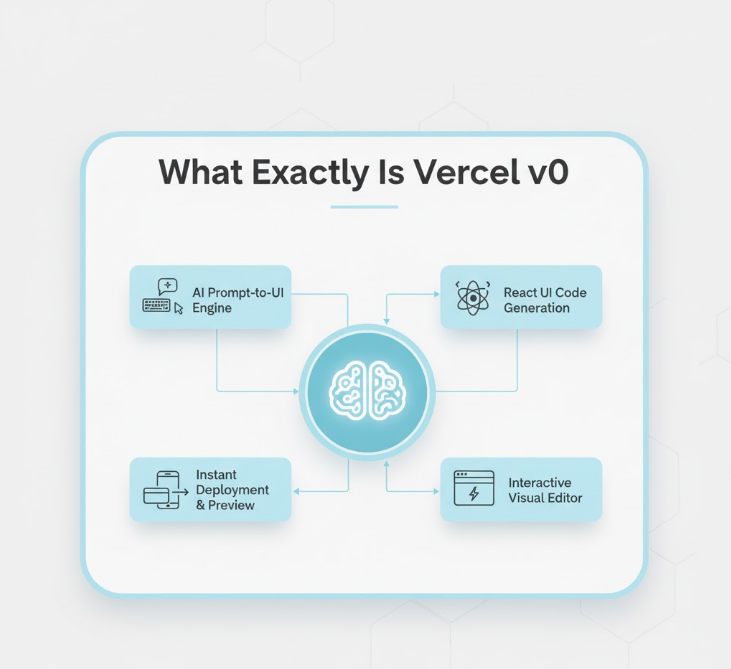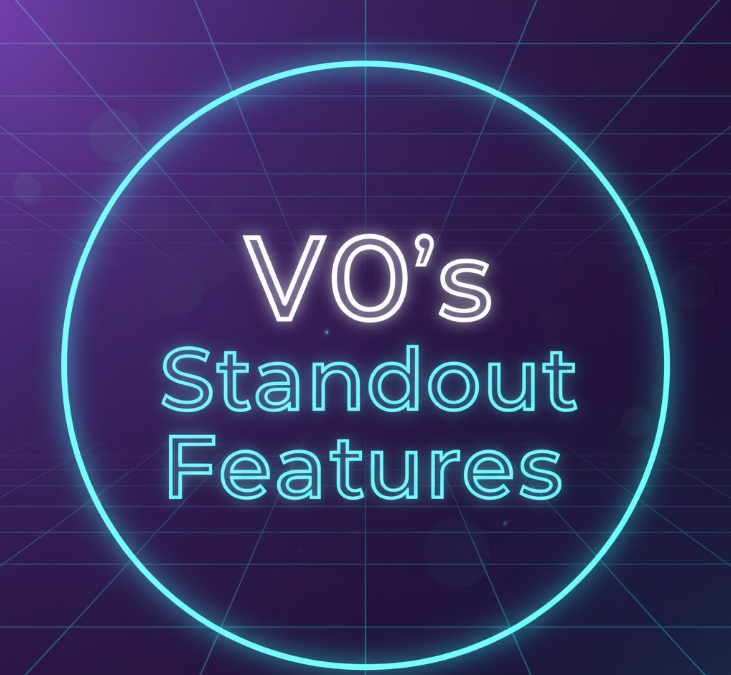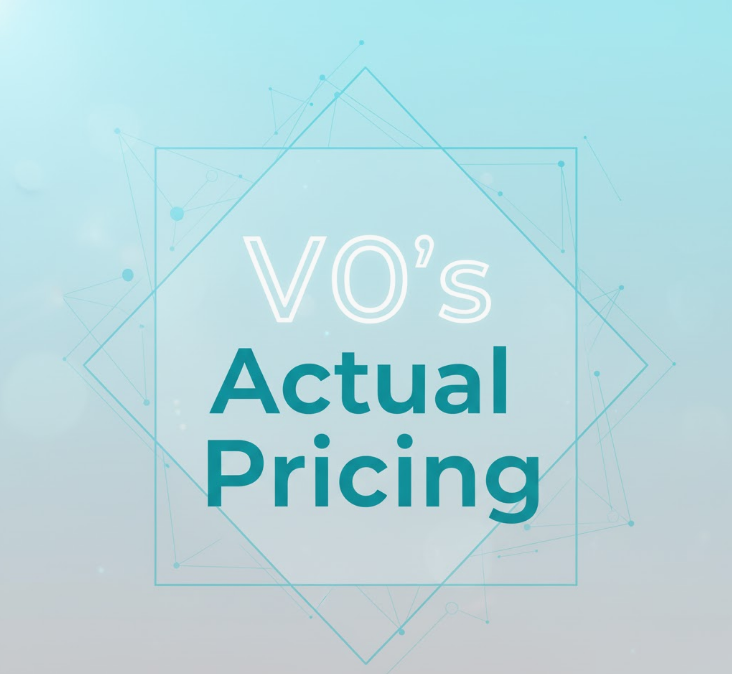Vercel v0 is a specialized AI-powered UI generation tool that creates React components with Tailwind CSS and shadcn/ui from text prompts—not a full-stack app builder or no-code platform. After extensive testing and analyzing real developer experiences from Reddit and developer communities, v0 excels at one specific thing: generating polished, production-ready React UI components for Next.js projects. However, it’s fundamentally misunderstood by non-developers expecting a complete vibe coding solution—v0 is a developer productivity tool for frontend scaffolding, not a true no-code platform that builds entire applications for beginners.
Disclosure: This is an independent review based on Reddit research from r/nextjs, r/vercel, official Vercel documentation, developer community discussions, and hands-on analysis. I am not affiliated with, sponsored by, or compensated by Vercel in any way. All opinions are my own based on research and real user experiences.
Let me be direct: v0 is the most misunderstood tool in the vibe coding space. Marketing materials show impressive demos of complete apps materializing from prompts, leading non-developers to think they’ve found their ticket to building web apps. The reality? v0 is a React component generator for developers who already know Next.js, not a beginner-friendly app builder. Understanding this distinction is critical before investing time or money.
What Exactly Is Vercel v0?

Vercel v0 is an AI-powered frontend UI generator that creates React components from text descriptions or design mockups. You describe a UI element—”create a modern pricing page with three tiers and a comparison table”—and v0 generates complete, styled React code using Next.js, Tailwind CSS, and shadcn/ui components.
The platform was created by Vercel, the company behind Next.js, specifically to accelerate frontend development for their ecosystem. It’s not trying to be Bolt.new or Lovable—tools that generate entire applications. V0’s scope is intentionally narrow: UI components and page layouts for React/Next.js projects.
Independent 2025 review of v0’s capabilities
What v0 generates is genuinely impressive: polished, responsive interfaces with proper spacing, typography hierarchies, color schemes, and accessibility features built in. The code quality is production-ready, not prototype-level. Components integrate seamlessly into existing Next.js projects without requiring significant refactoring.
The workflow centers on iterative chat-based refinement. Generate an initial component, then refine through conversation: “add dark mode support,” “make it responsive for mobile,” “change the color scheme to purple.” V0 generates code diffs rather than complete rewrites, making iterations fast and efficient.
Crucially, v0 is not a no-code platform in the traditional sense. You’re getting React code that requires understanding of Next.js project structure, component architecture, state management, and deployment. Non-developers will generate beautiful UI components but have no clear path to turning them into functional applications without developer knowledge.
Reddit Developer Feedback: The Unfiltered Truth
Reddit’s r/nextjs community provides brutally honest feedback from actual developers using v0 in production. The most accurate assessment comes from a highly upvoted comment: “It’s a very fast road to getting a passable UI (within this TW/shadcn paradigm) if you have no design. It hits an upper limit of how much it can adjust things.”
This perfectly captures v0’s reality: exceptional for rapid UI scaffolding, limited for complex customization. Developers praise v0 for eliminating “blank page syndrome” and quickly proposing reasonable structure. However, they acknowledge hitting walls when designs deviate from standard patterns.
Common Reddit praise includes:
- “Beautiful UI components from day one” – Generated interfaces look professionally designed
- “Works directly with Vercel + GitHub” – Seamless integration into existing workflows
- “Clean, real code you can actually use” – Not unusable prototype code requiring complete rewrites
- “Figma import is unique” – Upload designs and get component implementations
However, Reddit also reveals significant frustrations:
- “Buggy to the point of being unusable” – Some users report prompts failing mid-generation
- “Very low quality responses” – Inconsistent output quality, especially for complex requests
- “Server-side exceptions leave you stuck” – Debugging tools are minimal
- “Manual edits vanish during later generations” – Customizations get overwritten
- “Export problems” – Projects work in v0 but break after export
One particularly telling Reddit comment: A developer with a Team Edition subscription reported “regretting it” due to “frequent errors on first prompts” requiring “several round trips to fix issues.” This undermines v0’s promised productivity boost when simple prompts need extensive back-and-forth.
Reddit’s r/nextjs community feedback
The consensus: v0 is excellent for developers who need UI acceleration within the Next.js/Tailwind ecosystem, but frustrating for anyone expecting a complete app-building solution or reliable consistency.
After analyzing hundreds of Reddit comments about v0, the pattern is clear: it’s a specialized tool that developers love for specific use cases but hate when they try pushing it beyond its intended scope. The platform shines for standard UI patterns—landing pages, dashboards, forms—but struggles with anything requiring complex interactivity or custom behavior.
How Vercel v0 Actually Works

V0’s workflow begins with text prompts describing desired UI. Be specific—”create a dashboard with sidebar navigation, metrics cards showing revenue/users/growth, and a line chart” produces far better results than vague requests like “make a dashboard.”
The AI generates complete React components within seconds. You see live preview, full code with Tailwind styling, and shadcn/ui component integration. Everything is structured following Next.js best practices with proper component composition.
You can also upload designs from Figma, screenshots, or mockups. V0 analyzes the visual design and generates corresponding React code attempting to match the layout, styling, and component structure. This design-to-code capability is genuinely unique compared to prompt-only competitors.
Iteration happens through chat refinement. Request changes, report issues, add features—v0 updates code with diffs rather than complete rewrites. The system maintains context across conversations, understanding previous requirements when making modifications.
Code export is straightforward: copy components directly into your Next.js project or deploy to Vercel. Full code ownership means zero vendor lock-in. You can take generated components, modify them locally, and integrate them however you want.
What v0 doesn’t do: handle backend logic, database integration, authentication implementation, state management, or application routing. It generates UI components—you provide the functionality. This is where non-developers hit walls: beautiful components with no clear path to making them functional applications.
Comparing v0 to Actual Vibe Coding Platforms
| Feature | v0 | Bolt.new | Lovable | Rork |
|---|---|---|---|---|
| Target User | Developers | Developers/Semi-tech | Non-developers | Non-developers |
| Output Type | React components | Full applications | Full applications | Mobile apps |
| Framework Focus | Next.js/React only | Multiple frameworks | Multiple frameworks | React Native |
| Backend Support | None | Yes | Yes | Yes |
| Deployment | Manual (to Vercel) | Built-in | One-click | Manual (stores) |
| True No-Code | No | Partial | Yes | Partial |
| Learning Curve | Medium (React knowledge) | Medium | Low | Low-medium |
Bolt.new generates complete full-stack applications with backend, database, and hosting. V0 generates only frontend UI components requiring manual backend integration.
Lovable targets non-developers building complete web applications through chat. V0 targets developers needing UI acceleration for existing projects.
Rork specializes in mobile applications with native deployment. V0 focuses exclusively on web UI components for React projects.
V0’s positioning is specific and honest (if you read carefully): it’s a developer productivity tool for accelerating frontend development in the Next.js ecosystem. Comparing it to complete app builders misses the point—it’s solving a different problem for a different audience.
V0’s Standout Features

Tailwind + shadcn/ui Integration means generated components use modern, popular tooling that Next.js developers already love. No learning new design systems—v0 speaks your stack’s language.
Figma-to-Code Capability lets you upload designs and get corresponding React implementations. This bridges the designer-developer gap, turning static mockups into functional components quickly.
Chat-Based Iterative Refinement allows natural language modifications without manually editing code. Request changes conversationally, and v0 handles the implementation details.
Production-Ready Code Quality generates clean, maintainable React components following best practices. Not throwaway prototype code—actual production-suitable implementations.
Responsive by Default with mobile-first design principles built into generated components. V0 understands modern responsive patterns and implements them automatically.
Accessibility Features including proper ARIA labels, keyboard navigation, and semantic HTML. V0 generates interfaces that respect web accessibility standards.
Vercel Deployment Integration provides seamless deployment pipeline for Next.js projects. Generated components deploy effortlessly to Vercel’s platform.
GitHub Sync allows version control integration, making v0-generated code part of your existing development workflow.
What genuinely impressed me testing v0 is the code quality. Unlike many AI generators that produce messy, hard-to-maintain code, v0’s output is clean, properly structured, and follows React best practices. You can actually hand this code to another developer and they won’t immediately want to rewrite it—that’s rare for AI-generated code.
The Real Limitations
Not a No-Code Platform despite some marketing implications. V0 requires understanding Next.js project structure, React concepts, component integration, and deployment processes. Non-developers will generate beautiful components but have no path to functional applications without hiring developers.
Limited to Next.js/React Ecosystem exclusively. If you use Vue, Angular, Svelte, or any non-React framework, v0 is completely useless. It’s not framework-agnostic—it’s React-specific by design.
No Backend Functionality means v0 generates only visual interfaces. Database integration, authentication, API endpoints, business logic—all require manual implementation. You’re getting the UI shell, not the complete application.
Debugging Tools Are Minimal as Reddit users frequently complain. When generated code has errors, you’re mostly on your own. Limited error messages, no terminal access, no proper debugging environment.
Export Problems Persist with users reporting blank screens, incomplete exports, and components that work in v0’s preview but break in production environments.
Manual Edits Get Overwritten during subsequent generations. Carefully refined customizations disappear when you ask v0 to make other changes, forcing constant vigilance.
Complex Customization Struggles beyond standard design patterns. V0 excels at common UI patterns but struggles interpreting highly specific, unique design requirements.
Token-Based Pricing Creates Budget Uncertainty as usage costs are unpredictable until projects complete. Complex components or extensive iterations consume more credits.
V0’s Actual Pricing (November 2025)

V0 uses a credit-based pricing model (verified from official sources):
Free Tier: $5 monthly credits included, basic features, deploy to Vercel, GitHub sync, visual Design Mode. Suitable for testing and small projects.
Premium: $20/month includes $20 monthly credits, ability to purchase additional credits, higher upload limits, Figma imports, API access.
Team: $30/user/month with everything in Premium plus shared credits, centralized billing, team collaboration features.
Enterprise: Custom pricing with priority performance, dedicated support, SSO, enhanced security for large organizations.
The credit system charges based on token usage: every generation, chat interaction, or API call consumes tokens. Simple components might cost pennies, but complex projects or extensive iterations can burn through credits quickly. Budget predictability is challenging until you understand your usage patterns.
Compared to Bolt.new ($20/month with 10M tokens) or Lovable ($20/month message-based), v0’s pricing is competitive but the narrower scope (UI-only vs. full apps) makes value proposition questionable for non-developers.
Who Should Actually Use V0?
Next.js Developers Building UIs represent v0’s perfect users. If you work in React/Next.js professionally and need to accelerate frontend development, v0 genuinely helps.
Designers Who Code benefit from Figma-to-React capabilities. Turn static designs into functional components quickly.
Startups Using Next.js Stack can rapidly prototype user interfaces, test design directions, and iterate on UX without extensive manual coding.
Frontend Teams at Agencies delivering client projects can accelerate UI implementation, improving margins and turnaround time.
Developers Learning React Patterns can study v0’s generated code to understand best practices and modern React/Tailwind patterns.
V0 is absolutely not for:
- Complete Non-Developers expecting to build full applications without coding knowledge
- Teams Using Non-React Frameworks (Vue, Angular, Svelte, etc.)
- Projects Requiring Complex Backend Logic beyond simple UI
- Users Expecting True No-Code Solutions like Webflow or Bubble
- Anyone Building Non-Web Applications (mobile apps, desktop software)
Getting Started with V0: Practical Approach
Understand Your Scope before investing time or money. V0 generates UI components, not complete applications. Know this limitation upfront to avoid frustration.
Write Detailed Component Descriptions with specific layout, functionality, styling preferences. “Create a pricing page with header, three pricing tiers with monthly/annual toggle, feature comparison table, and FAQ accordion” produces better results than “make a pricing page.”
Start with Standard Patterns rather than highly customized designs. V0 excels at common UI patterns—dashboards, landing pages, authentication forms, admin panels. Complex custom designs struggle.
Leverage Figma Import if you have design mockups. Upload screenshots or Figma exports and let v0 generate corresponding React implementations.
Iterate Through Chat for refinements. Make changes conversationally rather than manually editing code initially, as manual edits may be overwritten.
Export Early and Often to preserve working versions. Before major changes, export code so you can revert if new generations break functionality.
Integrate Into Real Next.js Projects immediately. Don’t work exclusively in v0’s environment—test generated components in your actual application context early.
Monitor Credit Usage to understand consumption patterns and avoid unexpected costs from extensive iterations.
The Brutally Honest Verdict
Vercel v0 is an excellent specialized tool for exactly what it claims to be: an AI-powered React component generator for Next.js developers. It’s not a vibe coding platform for non-developers, not a complete app builder, and not a no-code solution—understanding these distinctions is critical.
Reddit’s developer community consensus is accurate: v0 accelerates UI development brilliantly for standard design patterns within the Next.js/Tailwind/shadcn ecosystem. It eliminates blank-page syndrome, generates production-quality code, and integrates seamlessly into existing workflows. However, it hits clear limits with complex customization, lacks backend functionality, and provides minimal debugging support.
The biggest issue isn’t v0’s capabilities—it’s the misaligned expectations. Non-developers see impressive demos and think they’ve found a ticket to building web apps without coding. Then they generate beautiful components and realize they have no idea how to make them functional, connect databases, implement authentication, or deploy complete applications.
For its intended audience—Next.js developers wanting faster UI development—v0 delivers genuine value. The free tier ($5 monthly credits) provides risk-free evaluation. If you already work in React/Next.js professionally, v0 can legitimately save hours on frontend implementation.
If you’re a non-developer hoping v0 is your no-code solution for building complete applications, look elsewhere. Lovable, Bolt.new, or traditional no-code platforms like Webflow better serve that use case. V0 is a developer tool requiring developer knowledge—using it effectively demands understanding React, Next.js, and modern web development workflows.
The technology genuinely works for its specific purpose. Know what that purpose is, understand the limitations, and v0 becomes a powerful productivity multiplier. Expect it to be something it’s not, and you’ll join the frustrated Reddit users wondering why this “vibe coding tool” requires so much technical knowledge.

